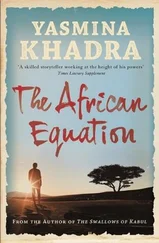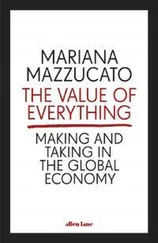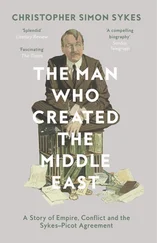With many founding corporate investments, the downside is a complete loss of all invested funds. In our case, we believed we could at least produce an annual rate of return that exceeded the aggregate return requirements of the pension fund capital that seeded our new business, with substantial upside. In 2011, our plan and an excellent leadership team allowed us to garner an investor commitment of $500 million to launch STORE Capital. At the time, there were just five founders with a vision, no offices, no assets, and many virtual meetings. Two years later, with the company on track, we accepted another $530 million in investor commitments. Another year and a half later, we listed STORE Capital on the New York Stock Exchange. By the end of 2019, STORE had an enterprise valuation approaching $12 billion. More importantly, we had created more than $3 billion in equity market value added.
Over the years, my approach to financial modeling became simpler. Complex models are neat, but they can be prone to greater error. If I did a complex model, it was always wise to have a simple model just to see if the results approximated one another. In a way, financial models are like computer programs: the fewer lines of code you write, the faster and more dependable the result is. For Investor Day demonstrations at STORE Capital, I would reduce the corporate financial model inputs to just 14 key variables. Take that in for a moment: We had a company having over $9 billion in assets, annual revenues greater than $600 million, and 95 employees, and it was possible to whittle our entire enterprise down to 14 variables.
You may be wondering why a discussion of corporate financial modeling approaches is so important. Well, it turns out that you can create a basic corporate financial model with as few as six variables that drive investor rates of return. At a high level, this means that corporate leaders have just these Six Variables—as I've named them—under their control, all working in concert with one another to deliver investor rates of return. And, as you should know by now, potent business models having investor rates of return that exceed investor return requirements lie at the heart of business wealth creation. So, the Six Variables work collectively to form a framework for understanding the essentials of how businesses work to create wealth.
Understanding that framework may make you more interested in business.
Understanding that framework may influence your employment decisions.
Understanding that framework may help you to lead a business.
Understanding that framework might inspire you to start a business.
Understanding this framework will make you a better business investor.
Understanding that framework will improve your personal wealth opportunities.
That's what this book is all about.
Chapter 1 Free Enterprise and Wealth Creation
In the United States, businesses—large and small, public and private—create the beating heart of individual and national wealth creation. At the end of 2018, our nation boasted more than 32 million enterprises, of which just over 6 million had paid employees. 1 The latter equated to a business for every 55 Americans, or, better still, a business having paid employees for roughly every 30 Americans in the labor force.
Given those statistics, if one were to look at the total number of businesses, there would be a business for every five Americans in the labor force, which is astounding.
How has this been made possible?
The abundance of businesses in America owes itself to three factors: An educated workforce, a ready supply of capital, and a strong rule of law. The United States is not alone in this; in no small way, these contributors to business formation lie at the foundation of the economy of every highly developed nation.
In the Beginning Is the Idea
Most businesses start with an idea, which usually takes the form of a solution to a problem. The key question is how to build a profitable business model around the idea.
In 1995 Larry Page and Sergey Brin, who had met as graduate students at Stanford, saw that searching the internet for relevant information was a cumbersome process. Their idea was to make internet searches efficient, productive, and user-driven, applying the technology they created to drive a high level of search demand.
They didn't know how this idea could translate into a profitable business model. No one could have foreseen how dominant and profitable Google, the company they created, was to become. Certainly not Page and Brin, who in 1999 briefly entertained selling Google to Excite, a more established search engine company, for $750,000, which would have allowed them to turn a tidy profit and return to their graduate studies. No one could have blamed them for unloading their money-losing venture; that year, Google had posted a $3.1 million loss on revenues of just $220,000.

Sergey Brin, left, and Larry Page posing in a messy office setting in October 2002
Credit: © Michael Grecco Productions, Inc./ Grecco.com, ALL RIGHTS RESERVED.
Just two years later, the company would produce its first profit of $32 million on revenues of $86.4 million, and it would never look back. Three years after that, they took Google public. Between 2004 and 2019, Page and Brin sold over $10 billion of Google shares apiece, and yet still held onto corporate shares valued at more than $25 billion for each of them.
Over the next two years, the company they founded continued to prosper. By the end of 2021, with a net worth estimated by Forbes of $123 billion, Larry Page ranked as the fifth-richest person in the world. His former partner, Sergey Brin, was effectively tied at number six, with a reported net worth of $118.5 billion.
This brings up the interesting topic of the likelihood of anyone—including you or me—becoming a billionaire. Looking to the richest among us makes an interesting study, because these subjects provide insight into the most compelling business models in each generation.
As of the end of 2020, there were over 3,200 billionaires in the world, of which over a quarter resided in the United States. 2 The odds of an American being a billionaire are roughly 1 in 355,000, or far better than the extremely long odds of winning a Powerball lottery, which is approximately 1 in 300 million.
Of course, many of the world's richest inherited their wealth, and so might be excluded from the competition to become billionaires. A better question might be this: What are the odds of being a self-made billionaire? Not too bad, actually; of the global population of billionaires surveyed at the end of 2020, 60% were self-made, which is an astonishing statistic. 3 The amount of wealth created in the 50 years between 1970 and 2020 is indeed almost without precedent. One would have to look to the same period a hundred years earlier for a comparative period of productivity and creativity. Instead of names like Bezos, Musk, Gates, and Buffett, one might have spoken of Rockefeller, Carnegie, and Morgan. Still, the numbers of the world's most affluent today dwarf those of the Gilded Age, or what is also called the Age of the Second Industrial Revolution.
Of course, much of the difference in the magnitude of today's superrich lies in population growth. Much is also owed to enhancements in capital formation, including resources such as the Small Business Administration, venture capital, and pervasive private equity firms. These resources, together with technological advances, gave rise to what is today called the Third Industrial Revolution, with economic and productivity growth propelled by digital and technology advances.
Читать дальше













